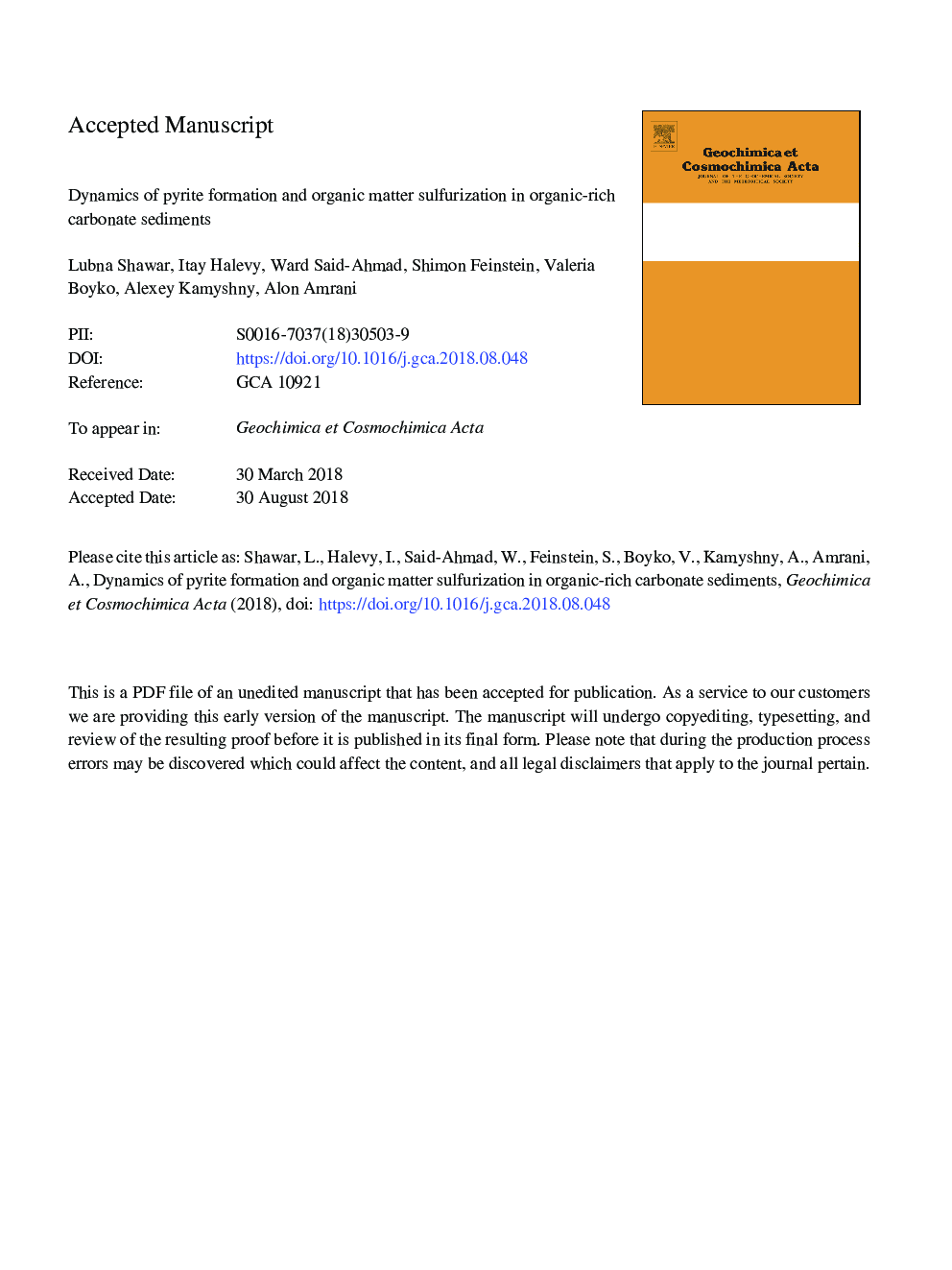| کد مقاله | کد نشریه | سال انتشار | مقاله انگلیسی | نسخه تمام متن |
|---|---|---|---|---|
| 10149874 | 1646781 | 2018 | 73 صفحه PDF | دانلود رایگان |
عنوان انگلیسی مقاله ISI
Dynamics of pyrite formation and organic matter sulfurization in organic-rich carbonate sediments
ترجمه فارسی عنوان
دینامیک تشکیل پریت و سولفوریزاسیون ماده آلی در رسوبات کربنات غنی از ارگانیزم
دانلود مقاله + سفارش ترجمه
دانلود مقاله ISI انگلیسی
رایگان برای ایرانیان
کلمات کلیدی
موضوعات مرتبط
مهندسی و علوم پایه
علوم زمین و سیارات
ژئوشیمی و پترولوژی
چکیده انگلیسی
Organic-rich carbonate sediments are deposited in a range of environments today and in the geologic past. A significant part of organic matter (OM) degradation in such sediments often occurs by microbial reduction of seawater sulfate, and the sulfide product may be preserved in pyrite and in organic sulfur (S) compounds. The isotopic composition (δ34S) of these phases can provide valuable information about S cycling in the ocean and in sediment porewaters, but only insofar as the processes governing these δ34S values are understood. To this end, we investigated the pathways, timing and interactions between pyrite and organic S formation during the deposition of organic-rich chalks. As a test case, we studied cores representing the thickest (â¼350â¯m) and most complete Late Cretaceous organic-rich sequence along the southern Paleotethyan margin (central Israel). The organic S and OM contents show an inverse relation with the pyritic S content, which together with the uniform FePy/FeHR ratio (â¼40%), suggest competition between organic S and pyrite formation. Both kerogen and pyritic S are 34S-depleted relative to Late Cretaceous marine sulfate (δ34Sâ¼17-20â°), but the kerogen S is consistently and unusually 34S-enriched relative to coexisting pyrite by up toâ¯â¼38â°. Large S isotope fractionation (â¼60â°) during microbial sulfate reduction necessary to reproduce the lowest pyrite δ34S values in the core, and relatively invariant δ34S values in organic S suggests that this large fractionation was approximately constant during deposition of the chalks in the core. Higher pyrite δ34S values observed in the most organic-rich parts of the core may be explained by Fe-limited pyrite formation, perhaps due to the reaction of Fe (e.g., complexation, sorption) with organic compounds. Lesser Fe availability, relative to the OM available for sulfate reduction, limits the ultimate abundance of pyrite, but importantly, it delays the formation of pyrite to deeper below the sediment-water interface, from 34S-enriched sulfide produced by Rayleigh distillation of a dwindling sulfate reservoir. Thus, it appears that competing Fe-OM, S-OM and Fe-S reactions can significantly affect the δ34S values recorded in pyrite in organic-rich carbonate sediments despite large and relatively constant microbial S isotope fractionation.
ناشر
Database: Elsevier - ScienceDirect (ساینس دایرکت)
Journal: Geochimica et Cosmochimica Acta - Volume 241, 15 November 2018, Pages 219-239
Journal: Geochimica et Cosmochimica Acta - Volume 241, 15 November 2018, Pages 219-239
نویسندگان
Lubna Shawar, Itay Halevy, Ward Said-Ahmad, Shimon Feinstein, Valeria Boyko, Alexey Kamyshny, Alon Amrani,
